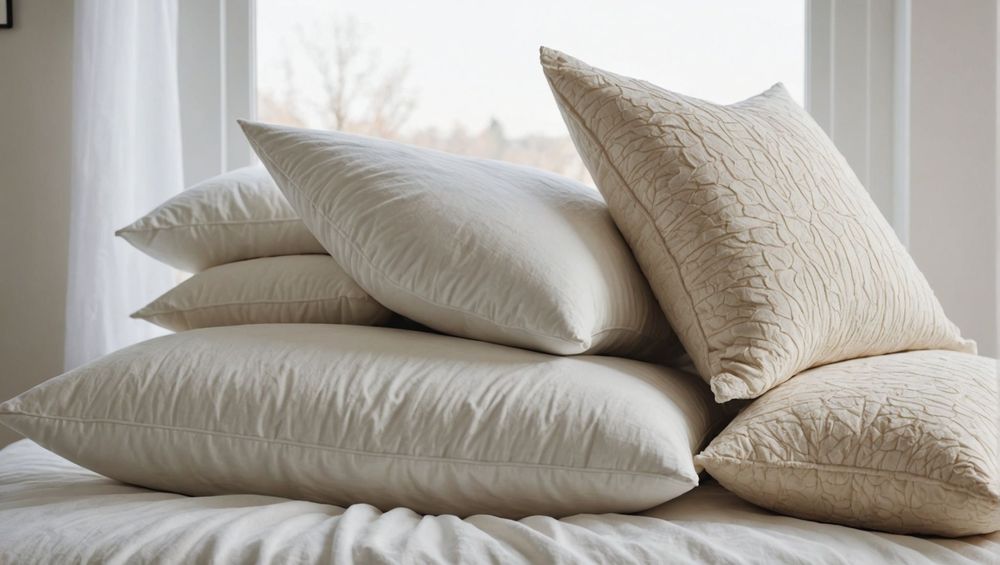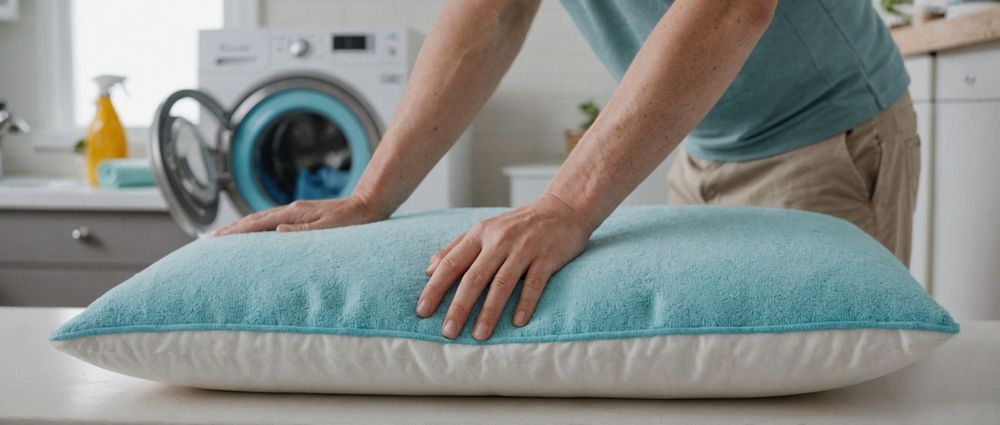Washing pillows correctly is critical for maintaining their freshness, hygiene, and longevity. A cleaning expert recommends specific methods tailored to the type of pillow material to ensure you keep them in the best condition. This article will explore various techniques for washing different types of pillows, from cotton to memory foam, as well as key tips on drying and care to keep your bedding looking and feeling its best.
The Importance of Regular Pillow Washing

Regularly washing your pillows is essential not only for hygiene but also for maintaining a comfortable sleeping environment. Over time, pillows accumulate dust mites, allergens, bacteria, and even mold, which can impact your health, especially for those with allergies or respiratory issues. Washing your pillows helps eliminate these harmful elements, refreshing them for a better sleep experience. It’s recommended that pillows be washed every 3-6 months, depending on use and material. Understanding how to wash them properly can prevent deterioration and ensure you get the most out of your investment in quality bedding. With the right approach, you can rejuvenate your pillows effortlessly.
Understanding Pillow Types

Before diving into the washing process, it’s essential to identify the type of pillows you have, as different materials require different care. Here are some common pillow types and their characteristics:
-
Cotton/Synthetic Fibers:
These pillows are generally machine washable and can tolerate regular cleaning. -
Memory Foam:
These pillows cannot be machine washed, as the foam can break down with water and agitation. -
Down/Feather:
These pillows require special care to maintain their fluffiness while preventing clumping. -
Latex:
Similar to memory foam, latex pillows should usually be spot cleaned rather than soaked.
Knowing your pillow type will guide you in using the correct washing method, preventing damage and extending their life. Always check care labels for specific washing instructions, as they can provide valuable insights tailored to your pillow’s material.
How to Wash Different Pillow Types

Now that you understand the different types of pillows, let’s delve into how to wash them appropriately:
Cotton and Synthetic Pillows
- Remove the pillow cover and any additional protectors.
- Check for stains and treat them with a mild detergent.
- Place the pillows in your washing machine on a gentle cycle with warm water.
- Add a couple of towels to balance the load and help with agitation.
- Rinse thoroughly to remove all detergent residue and run an additional spin cycle to remove excess moisture.
After washing, ensure the pillows are completely dry by putting them in the dryer on a low heat setting. Include dryer balls or clean tennis balls to help break up clumps and maintain fluffiness.
Memory Foam and Latex Pillows
For memory foam and latex pillows, it’s best to avoid soaking them. Follow these steps instead:
- Remove any pillow covers and wash them separately according to their care instructions.
- Spot clean any stains using a mixture of mild detergent and water applied with a soft cloth.
- To freshen the pillow, sprinkle it with baking soda, let it sit for a few hours, and vacuum off the excess.
- Allow the pillow to air dry in a well-ventilated area, avoiding direct sunlight which could degrade the foam.
This method ensures the integrity of the foam remains intact while keeping the pillow clean and fresh.
Drying Your Pillows Correctly
Drying is a crucial aspect of proper pillow care. Proper drying prevents mold and mildew growth, maintaining a healthy sleeping environment. Here are important tips for drying pillows effectively:
-
Avoid High Heat:
Use a low heat setting in the dryer to prevent damage to pillow materials. -
Use Dryer Balls:
Adding dryer balls will help fluff the pillow and redistribute materials evenly as they dry. -
Air Dry When Possible:
For delicate pillows, air drying will minimize wear and tear caused by heat. -
Check for Dampness:
Before storing, ensure pillows are completely dry to prevent mildew.
By following these drying tips, you can effectively maintain your pillows’ structure and comfort, prolonging their life.
Conclusion
Washing your pillows may seem like a daunting task, but understanding the right methods according to their material can make the process easy and effective. Regular maintenance not only enhances your sleep quality but also safeguards your health. By adhering to the outlined steps, you can refresh your pillows, keeping them in top condition for years to come. Whether you’re dealing with cotton, memory foam, or any other type, the right care will ensure a comfortable place to rest your head at night.
Часто задаваемые вопросы
1. How often should I wash my pillows?
It’s recommended to wash your pillows every 3-6 months depending on usage and the type of material they are made from.
2. Can I machine wash memory foam pillows?
No, memory foam pillows should not be machine washed as this can break down the foam. Spot cleaning is best for these types of pillows.
3. What should I do if my pillows smell bad?
If your pillows have an odor, spot clean them, sprinkle with baking soda, and let it sit for a few hours before vacuuming off the excess.
4. Can I use bleach to wash my pillows?
It’s advisable to avoid bleach as it can weaken the fabric and affect the materials in your pillows. Use mild detergent instead.
5. Is it safe to dry pillows in the dryer?
Yes, but use a low heat setting and include dryer balls to help maintain their fluffiness and ensure they dry evenly.
